Introduction
Black liquor, a byproduct of the wood pulping process, holds significant potential within the renewable fuels industry. Composed of a complex mixture of organic and inorganic components, its properties and applications are influenced by the specific wood species and pulping methods employed. Recent advancements in pretreatment techniques have enhanced the efficiency of extracting valuable components such as lignin, hemicellulose, and cellulose.
This progress not only improves the pulping and bleaching processes but also supports the development of lignin-first biorefineries and sustainable feedstocks. The integration of these techniques within the pulp and paper industry presents substantial opportunities for economic viability and sustainability, reducing greenhouse gas emissions and fostering a circular economy. As the industry continues to innovate, the comprehensive utilization of black liquor's organic and inorganic components promises a more sustainable and efficient future for biomass conversion and energy production.
Composition of Black Liquor
Black solution, a byproduct of the wood pulping method, is a complex mixture primarily produced during paper manufacturing. Its composition varies based on the wood species and pulping method used but generally includes organic compounds, inorganic salts, and various dissolved solids. The organic fraction is mainly composed of lignin, hemicellulose, and cellulose, while the inorganic portion contains sodium, sulfur, and other minerals.
Recent advancements in pretreatment techniques have significantly improved the efficiency of extracting valuable components from black liquor. These techniques have enabled the degradation of substantial amounts of lignin and hemicelluloses into products that can be extracted using water, solvents, or alkaline solutions. For instance, considerable developments over the past decade have focused on enhancing the pulping and bleaching methods in the pulp and paper industry, making it possible to extract cellulose and other biopolymers more efficiently. The wood cell structure, which consists of an external microfibril primary layer and a secondary wall with three sublayers (S1, S2, and S3), plays a crucial role in these processes.
The potential of lignin-first biorefineries to achieve more complete valorization of lignocellulose is also noteworthy. This approach highlights the current limitations and opportunities for lignin isolation and subsequent transformation into various chemicals. Additionally, the extraction of cellulose from mixed food waste demonstrates the feasibility of using sustainable feedstocks to produce biopolymers, thereby reducing greenhouse gas emissions from landfills.
Overall, the advancements in dark fluid processing and the extraction of valuable components from lignocellulosic biomass present significant opportunities for the pulp and paper industry to enhance its sustainability and economic viability.
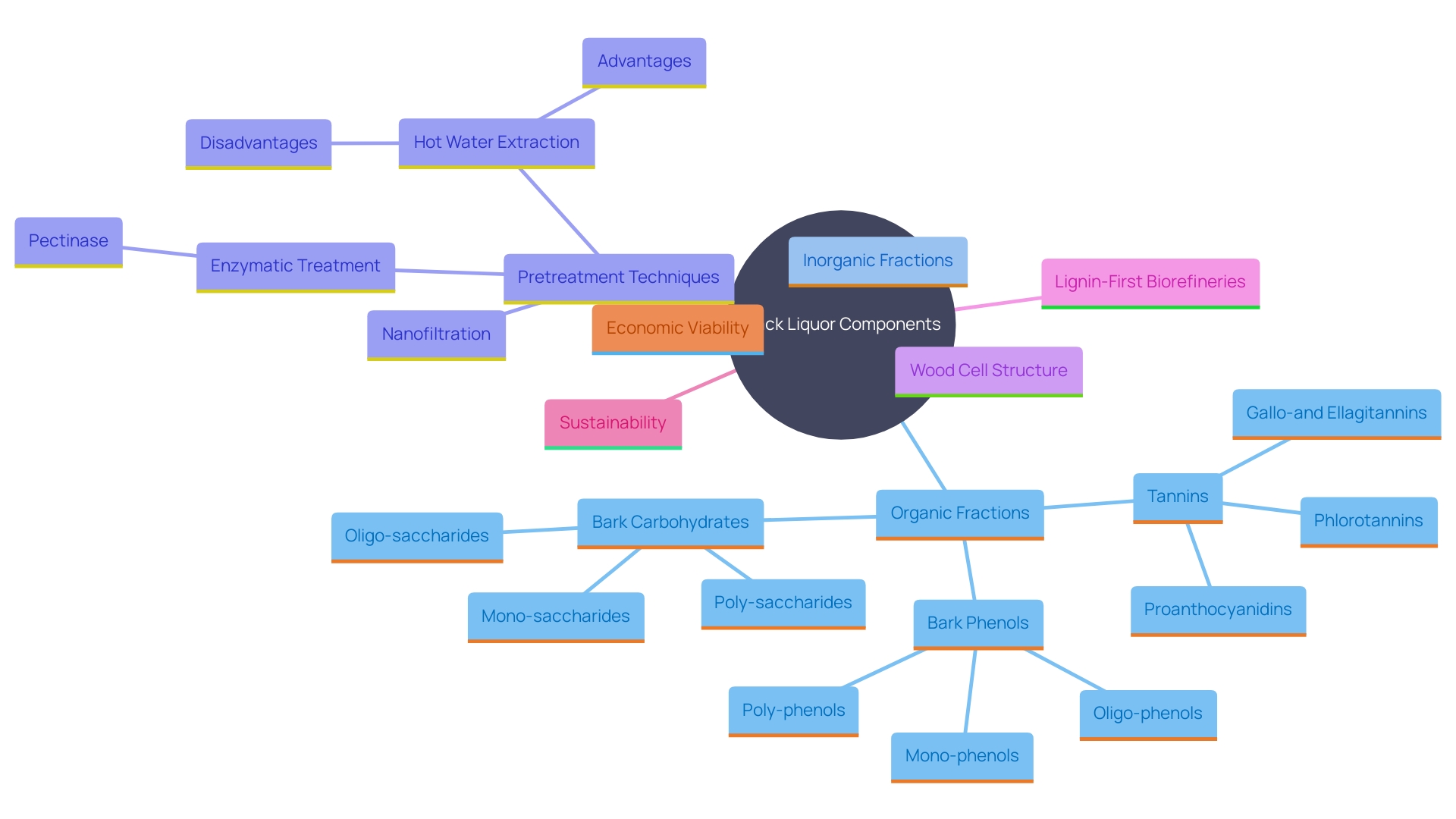
Organic Components of Black Liquor
The organic elements of black solution significantly influence its properties and applications. Lignin, a key element, contributes to the fluid's thickness and flammability, making it an important factor in energy recovery methods. Hemicellulose and cellulose fragments also remain in the solution, affecting its chemical reactivity. Advances in pretreatment techniques have shown that substantial amounts of lignin and hemicelluloses can be degraded to products extractable with water, solvents, or alkaline solutions, enhancing their utility in various industrial processes. Additionally, the degradation products of these polysaccharides can influence the beverage's environmental impact. For instance, Marcus Foston's research demonstrated the potential of lignin as a renewable alternative to petroleum-derived substances, highlighting its structural similarity to oxygenated hydrocarbons. This underscores the importance of efficient lignin utilization in making biomass conversion economically viable and environmentally friendly.
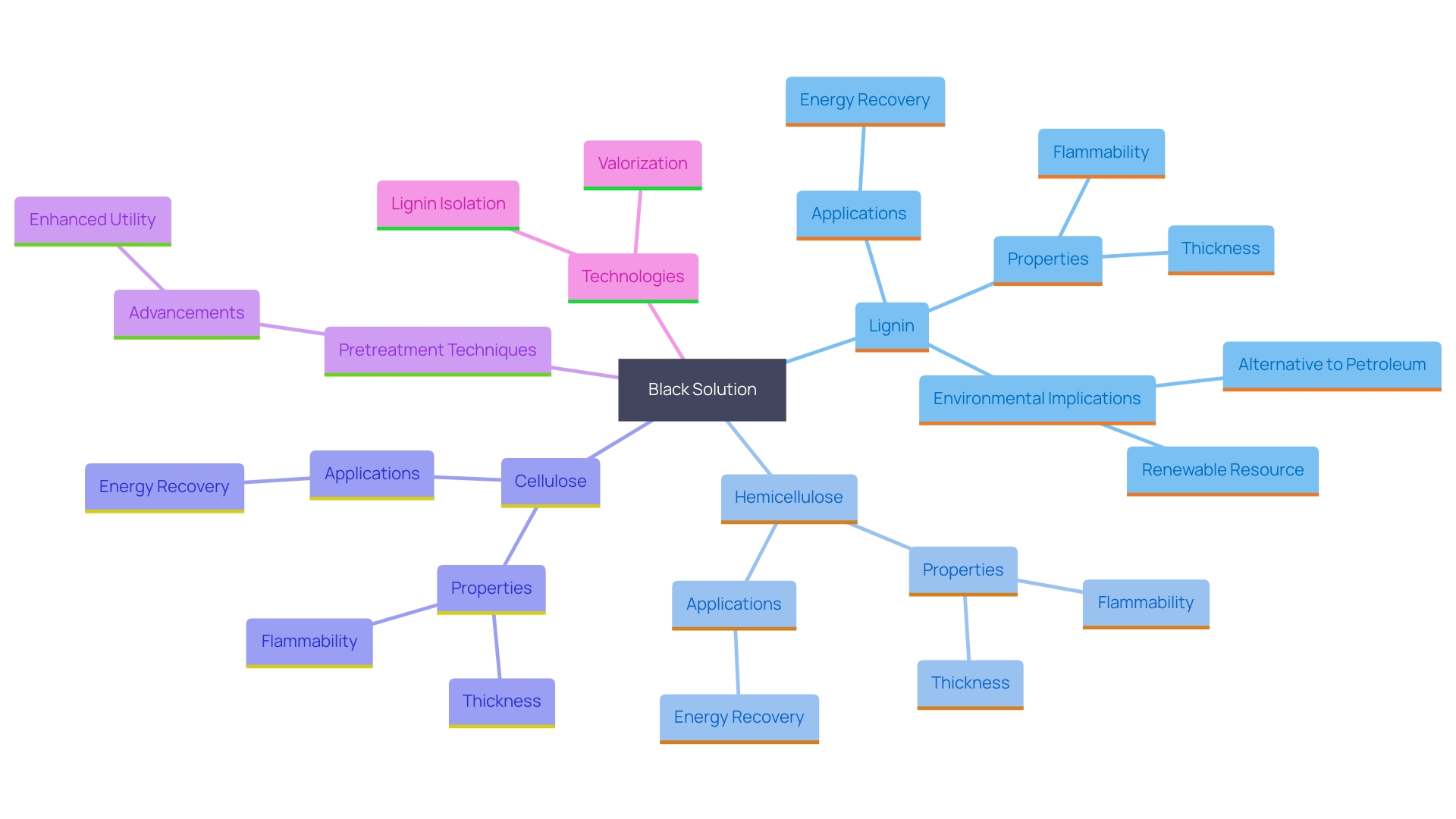
Inorganic Components of Black Liquor
Inorganic elements, mainly sodium and sulfur compounds, are essential to the properties of black solution. Sodium hydroxide and sodium carbonate, which result from the cooking substances utilized in the Kraft method, contribute significantly to the liquor's alkalinity. These components are essential for efficiently recovering pulping chemicals through methods such as evaporative concentration and combustion in recovery boilers. The sodium and sulfur compounds aid in the breakdown and extraction of lignin and hemicelluloses, enhancing the effectiveness of the pulping and bleaching methods. Recent advancements in pretreatment techniques have further improved these processes, allowing for substantial degradation of lignocellulosic biomass into extractable products with water, solvents, or alkaline solutions. This improvement not only optimizes chemical recovery but also supports the production of protein-rich feed for ruminants and the generation of valuable chemicals from lignin.
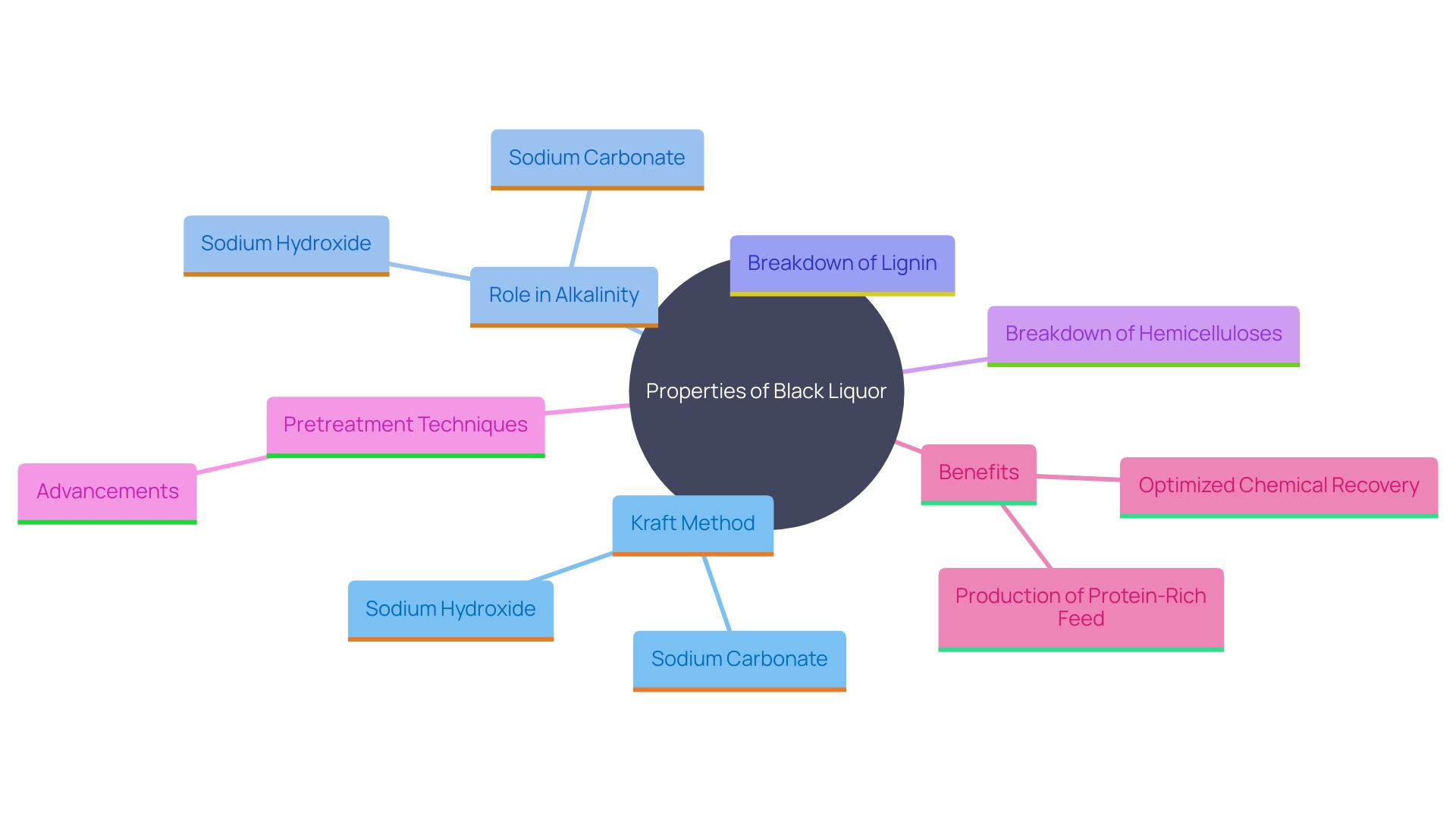
Physical Properties of Black Liquor
Black liquid demonstrates unique physical properties that significantly impact its handling and processing efficiency. One of the primary challenges is its high viscosity, which complicates flow and pumping operations, necessitating specialized equipment and careful monitoring. The density of dark fluid generally varies from 1.1 to 1.3 g/cm³, depending on its concentration levels. This variability demands precise control to ensure consistent processing outcomes. Additionally, surface tension and foaming tendencies are critical factors that influence the efficiency of recovery processes within recovery islands. Effective management of these parameters is crucial to optimize the overall operation and enhance the recovery of valuable components. The incorporation of sophisticated methods, like those observed in the management of olive mill wastewater through centrifugation and ultrafiltration, can provide knowledge for enhancing the processing and handling of dark liquid, thus minimizing pollution and retrieving valuable by-products.
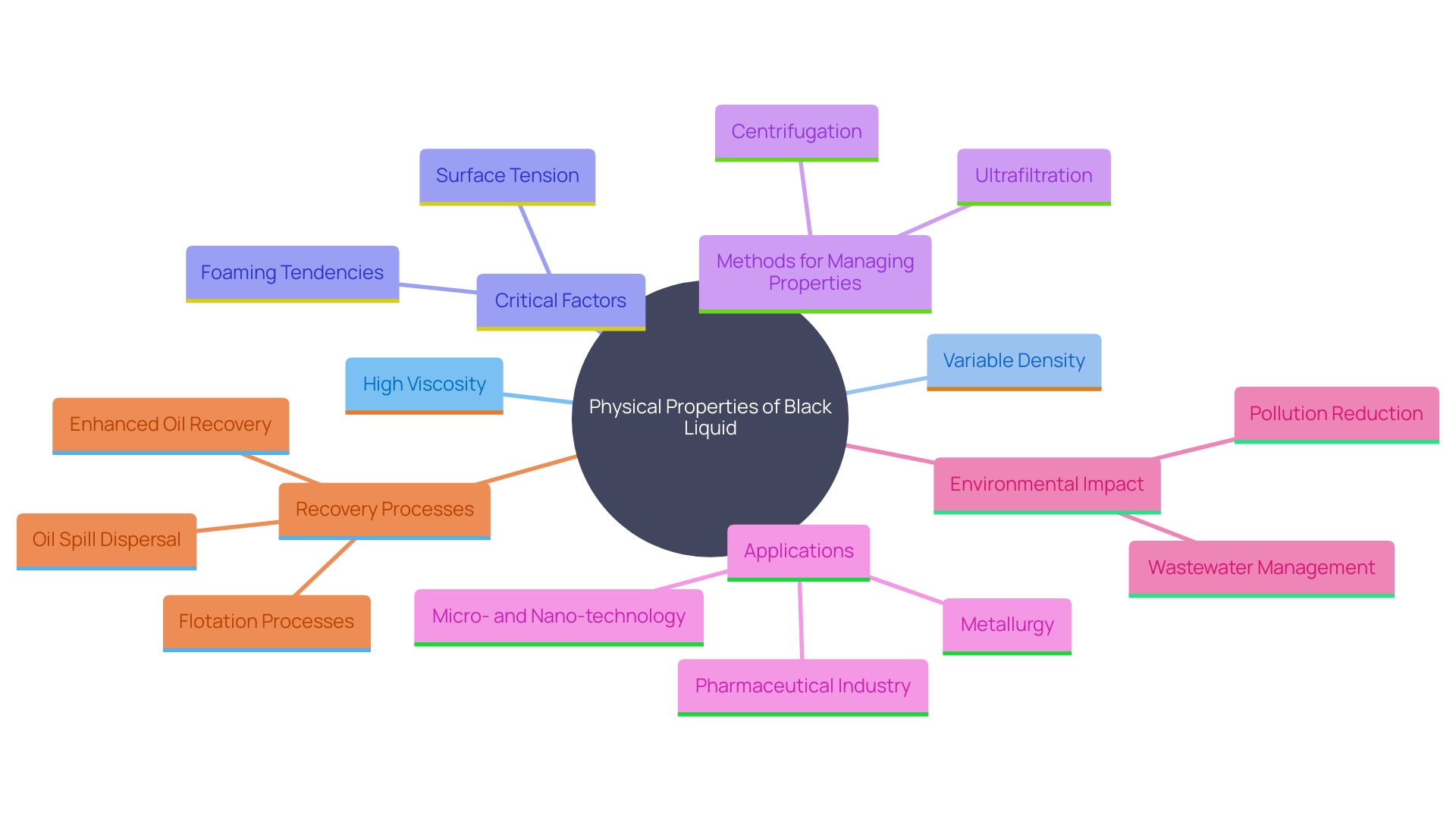
Environmental Considerations
The makeup of dark solution plays a vital role in the ecological impact of the pulp and paper sector. Efficient recovery and treatment processes are vital for reducing the release of volatile organic compounds and other pollutants, contributing to a cleaner production cycle. By improving the management of dark waste, emissions can be greatly reduced, aligning with wider sustainability objectives.
Innovative technologies, such as carbon capture and storage (CCS), offer promising solutions for the industry's carbon emissions, potentially transforming it into a net carbon-negative sector. For example, integrating CCS in paper production can sequester more carbon than is emitted, presenting a viable pathway to mitigate climate change.
Moreover, the efficient use of black byproduct in energy production enhances biomass utilization, reducing dependency on fossil fuels. This shift supports the circular economy by converting waste into valuable energy resources. As Dr. Andy West, Chief Chemist at Sonichem, highlights, utilizing by-products from forestry and agriculture operations for biochemicals can significantly decrease fossil fuel reliance and foster a sustainable production model.
The potential impact on both cost savings and sustainability is substantial. In the United States alone, the recycled paper industry generates approximately $90 million in annual revenue, employs over 100,000 people, and processes more than 31 million tons of recovered paper each year. Innovations like lidar-powered volumetric measurement solutions have already demonstrated significant operational improvements, further driving the industry's progress toward a greener future.
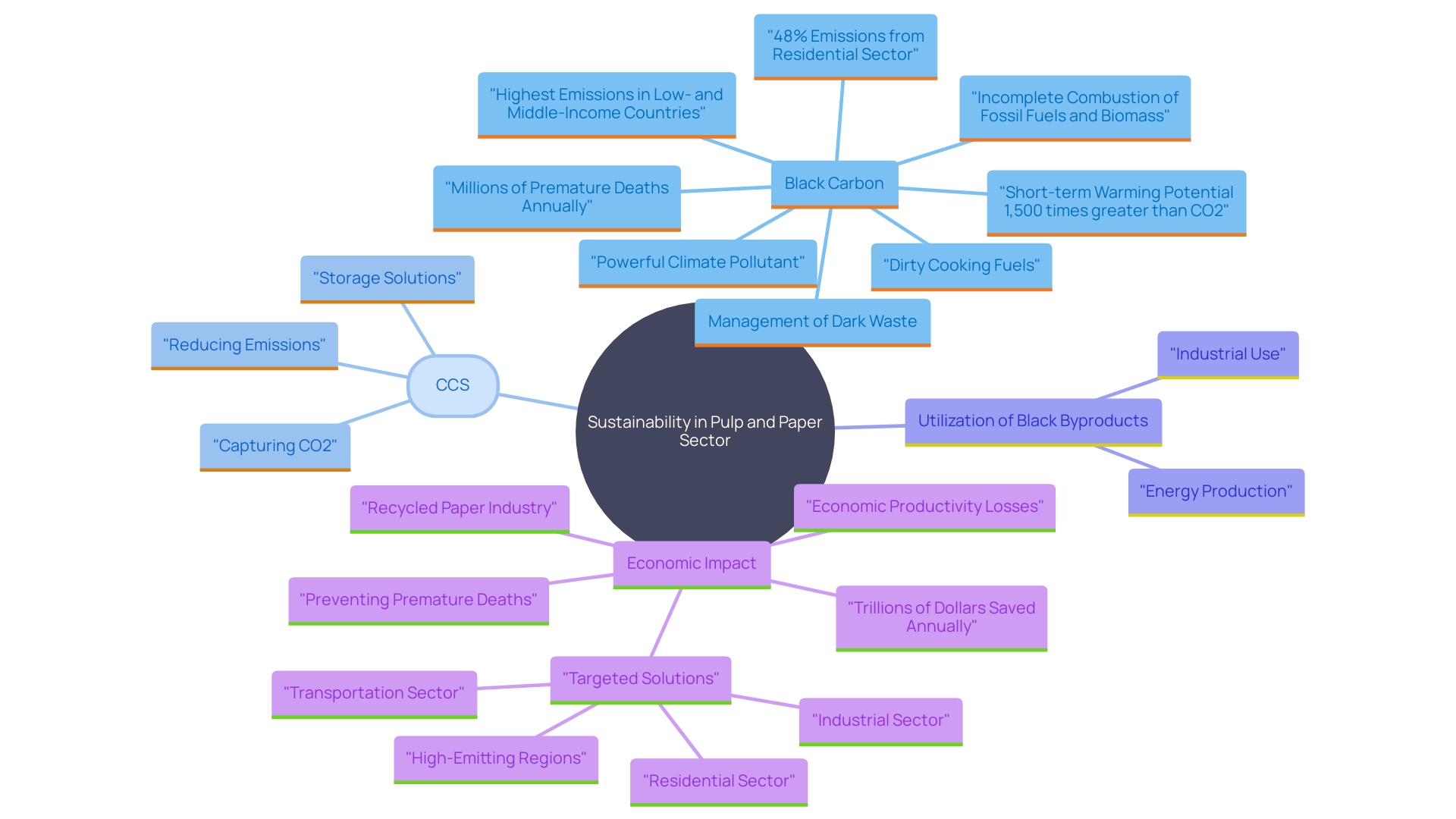
Applications and Uses of Black Liquor
'Black liquid, a byproduct of the pulp and paper industry, is primarily harnessed as a renewable energy source due to its high calorific value.'. This attribute enables effective combustion in recovery boilers, which not only produces steam and electricity but also recovers vital pulping substances. The potential of dark solution extends beyond these applications; ongoing research is exploring its viability as a feedstock for biofuels and bioproducts. For example, lignin, a significant part of dark solution, can be decomposed into valuable substances structurally akin to oxygenated hydrocarbons, providing a renewable substitute for petroleum-based products. This innovative approach is being examined by researchers like Marcus Foston, who aim to transform lignin waste into essential industrial substances, thus adding significant value to the pulping process. Further advancements in biofuel production, such as the development of cost-effective methods to break down plant material, promise to make next-generation biofuels both economically viable and carbon neutral. By leveraging the organic components of black liquor, the industry can produce valuable chemicals and materials, contributing to a more sustainable and efficient energy future.
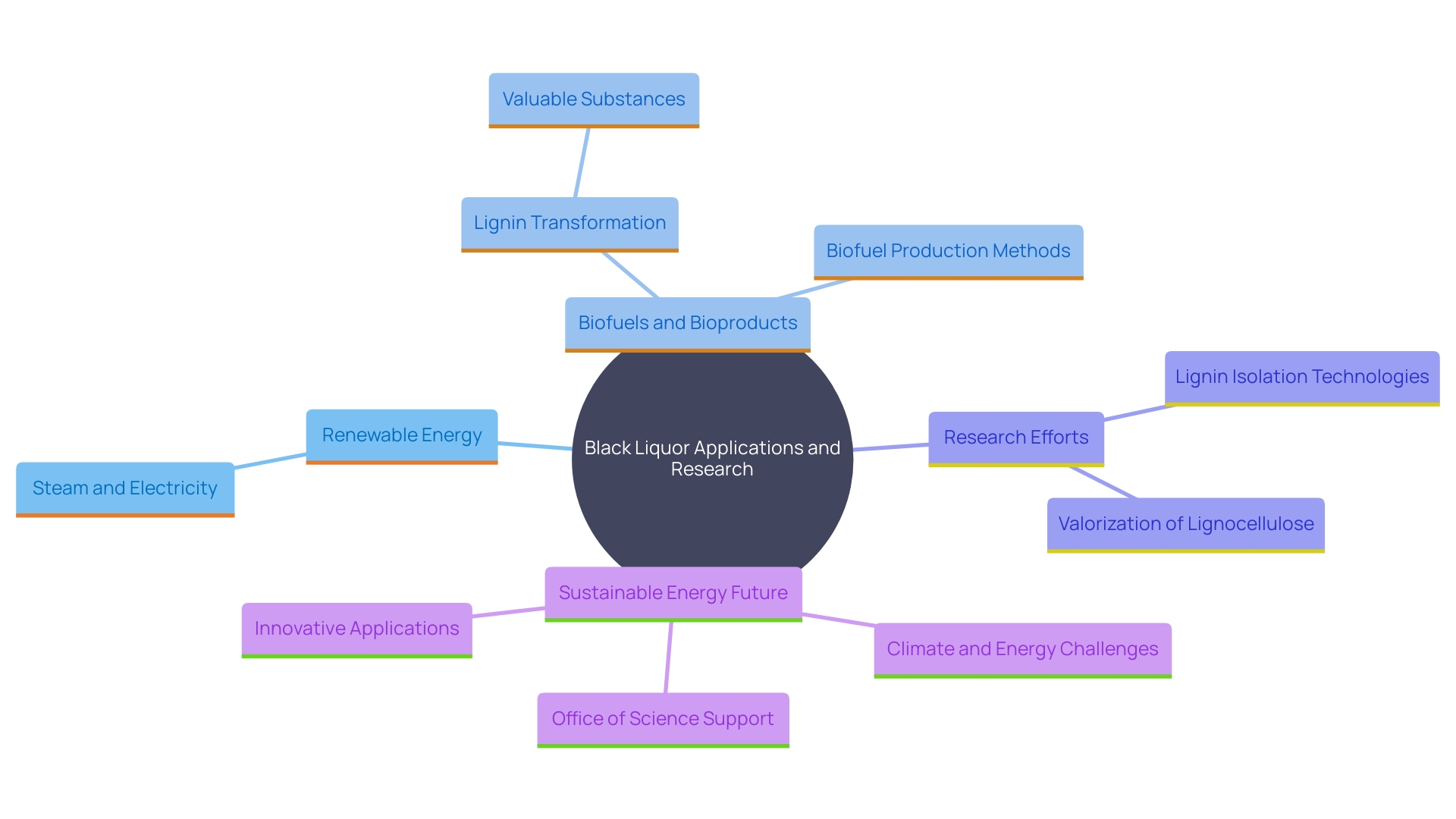
Conclusion
The exploration of black liquor's composition reveals its dual nature as both a complex mixture of organic and inorganic components and a valuable resource for the renewable fuels industry. The advancements in pretreatment techniques have enhanced the extraction efficiency of lignin, hemicellulose, and cellulose, which not only optimizes the pulping and bleaching processes but also facilitates the development of lignin-first biorefineries. This transition underscores the potential for achieving greater economic viability and sustainability within the pulp and paper sector.
The organic components, particularly lignin, play a pivotal role in determining the properties and applications of black liquor. The degradation of these components into usable products highlights the opportunity for innovative applications, such as using lignin as a renewable alternative to petroleum-derived chemicals. Simultaneously, the inorganic components, primarily sodium and sulfur compounds, are essential for effective chemical recovery, which supports the overall efficiency of biomass conversion processes.
Environmental considerations surrounding black liquor management emphasize the importance of optimizing recovery and treatment processes to minimize emissions and pollution. Technologies like carbon capture and storage can transform the pulp and paper industry into a net carbon-negative sector, aligning with global sustainability goals. The efficient use of black liquor not only enhances biomass utilization but also fosters a circular economy by converting waste into valuable energy resources.
In conclusion, the multifaceted applications of black liquor, from energy production to the development of bioproducts, position it as a cornerstone for advancing sustainability in the renewable fuels sector. By harnessing its full potential, the industry can significantly reduce its reliance on fossil fuels, promote economic growth, and contribute to a more sustainable energy future.




